BUTCHER, BAKER, UNDERTAKER (1895)
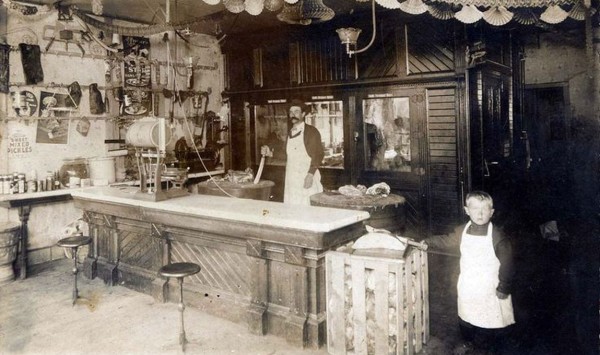
******************************************************************************************************************************** Brownstone Detectives investigates the history of our clients’ homes. The story you are about to read was composed from research conducted in the course of one of those investigations. Do you know the history of YOUR house? ********************************************************************************************************************************As the sleeping giant that is Bedford-Stuyvesant’s Ralph Avenue begins to awaken from its slumber, it is tempting to take a look back at some of the businesses that once lined this bustling thoroughfare. STUYVESANT EAST OF YORE The eastern section of Stuyvesant was alive with industry in the late part of the 19th and the early part of the 20th centuries. As houses had recently been built along the main streets, stores, schools, and churches had gone up along the avenues and on corners, dotting the landscape with their offerings. The neighborhood, after its initial build-up in the 1890s, became completely self-sufficient in terms of goods and services. Residents of Macon Street, like those from the other streets in the neighborhood, found themselves surrounded by a variety of offerings that would allow them – and their servants, in some cases – to satisfy the needs of their families easily and quickly. THE BUSTLING BUSINESS CORRIDOR THAT WAS RALPH AVENUE Starting in the late 19th century, Ralph Avenue became a busy local business corridor filled with a wide variety of shops and stores that suburban families needed to support households of consumers. Since its inception, the avenue had public transportation, in the way of horse-drawn omnibuses and then later a streetcar line, […]
THE METAMORPHOSIS OF A BROOKLYN BLOCK
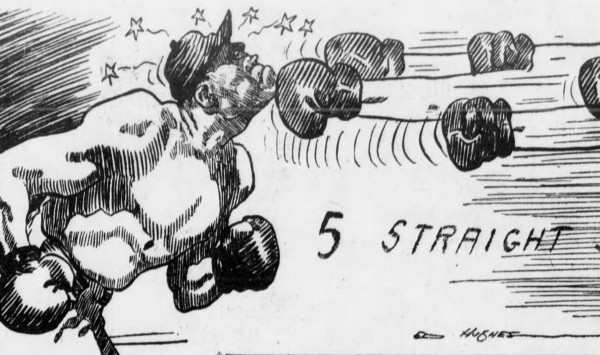
After showcasing some serious open-air ball playing, Saratoga Field was about to go indoors. There it would bear witness to a number of more diverse activities – dancing, fighting, and dreaming. But not necessarily in that order. By 1912, the owners of the block that Saratoga Field had utilized would realize the cash potential of developing the grounds for its marketing to commercial investors. Accordingly, they divided the land up into lots and sold it all off to real estate developers. Shortly afterwards, three new entertainment businesses would appear on the block – the Broadway Boxing Arena, the Halsey Theatre, and the Arcadia Dance Hall, all just across the street from the Brooklyn Rapid Transit (BRT) carbarn and Saratoga Square. THE BROADWAY ARENA The Broadway Arena (also known as the Broadway Sporting Club and the Broadway Exhibition Association Building) sat next to the Halsey Theatre (an alley in between), operating for close to 40 years. It was built around 1912 and had a capacity of 4,500 people. It would become Brooklyn’s top fight arena in the 1930s and 1940s, exhibiting the boxing skills of some of the country’s more well-known fighters, such men as Al Tiernan, Arturo Godoy (who fought Joe Louis in 1940), and Pete Sanstol. By 1951 the Broadway Arena was closed, the victim of competition from the television set. Its last boxing match was held on 29 November 1951. THE HALSEY THEATRE The Halsey Theater, a 2,100-seat theater, which originally presented both vaudeville and silent movies, was […]
“GROUND TO PIECES” IN THE CUT (1914)
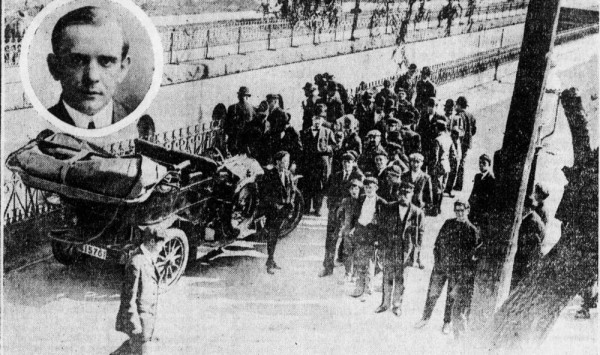
Martin Conly was the first to die by the cut in 1908. He and a boyhood “chum” were back from Coney Island at about 1 a.m. when the automobile they were traveling in ran into the low iron guard rail. Conly, the son of a prominent Brooklyn Democratic ward leader, was thrown from the vehicle and onto the tracks below. He was killed instantly. The Long Island Rail Road, which was not held accountable in court for the death, would later remove the light iron fencing and replace it with a thick concrete wall to prevent the same thing from happening again. Just a month later, though, before they could eradicate the danger – it happened again. Five young men, enjoying a “joyride” in a “large touring car,” heading north on Howard Avenue toward Atlantic Avenue, plunged into the wide trench and landed on the tracks “25 feet below,” just as a train was scheduled to pass. It was 2:10 a.m. It wasn’t until 27 December 1914, though, that an automobile would plummet into the cut while a passing train “ground to pieces” a man and his automobile. It had been traveling south on Howard Avenue towards Atlantic Avenue, when it crashed into the iron fencing. Unfortunately, the Long Island Rail Road had not found it necessary to build the same type “re-enforced” concrete wall on the north side of the cut (as it had on the south). MITIGATING THE CUT Today, the mitigation is noticeable – but just barely. […]
UMBRELLA WEEK…ALREADY? (1920)
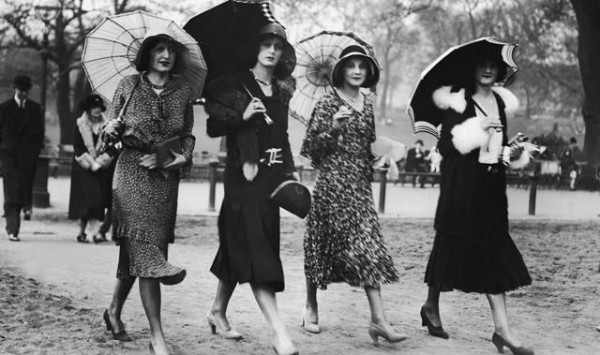
******************************************************************************************************************************** Brownstone Detectives investigates the history of our clients’ homes. The story you are about to read was composed from research conducted in the course of one of those investigations. Do you know the history of YOUR house? ******************************************************************************************************************************** If it was October of 1920, then you knew it was National Umbrella Week…right? Yaaaaaaaa……riiiiiiiiiiight…… At the very least, they were celebrating the occasion down at 114 Court Street. A product of the post-war marketing boom, “National Umbrella Week” was never celebrated again after 1920. But it was good while it lasted. Maybe it sold an extra umbrella or two. Who knows? THE BROOKLYN UMBRELLA COMPANY Today, we know 114 Court Street – that squat, 2-story, brick building in downtown Brooklyn – as a pizza joint. Back in 1919, though, it housed the Brooklyn Umbrella Company. The company sold umbrellas and they fixed umbrellas. This was back in a time when umbrellas were an investment in inclement weather – not throwaways cheaply mass-produced in China. Offering “linen gloria” and “union taffeta,” they sold “umbrellas that are a pleasure to carry.” Owned and operated by Isaac Smith Strong, The Brooklyn Umbrella Company started manufacturing umbrellas at this location around 1895. They finally closed up shop just a few years before the beginning of the depression, after which the location became a beauty shop and then later a restaurant. THE STRONG UMBRELLA Strong, himself, though, produced umbrellas well before 1895, but under his own name at 170 Fulton Street, and then later at […]
“TOMMY” O’TOOLE IN SING SING AGAIN? (1915)
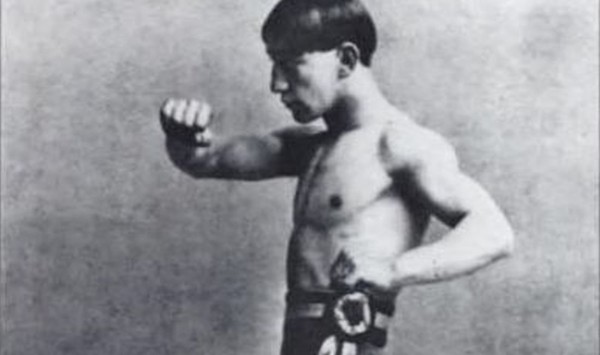
Burglaries took place with great regularity in Brooklyn 100 years ago. Skimming through Brooklyn Daily Eagle archives and reading newspapers from that period, I come across them all the time. They usually involve males, between the ages of a 16 and 24, just about all of whom have previous criminal records, and who end up getting sent “up the river” to Sing Sing. Yesterday, while scanning the papers, a small story on a burglary that took place almost 100 years ago – to the day – caught my eye. Why? I cannot say. It was a rather pedestrian article, but it caused me to wonder at what happened to the subject, one William O’Toole. Being in the detective business, there are always ways of finding out these things. Being a history detective, though, it gets a little tougher and requires some more than usual digging. But I was ready for digging yesterday, and so I decided to follow my leads. THE STORY The offense took place on 18 May 1915, at 864 Nostrand Avenue. O’Toole was the unlucky one to get caught as an accomplice got away. Hailing from Manhattan, according to the piece, he was young man of 22 years at the time, referred to in the article as an “Old Offender.” His record of offenses was three deep, having already served time in Elmira, Sing Sing, and the State Penitentiary. This time he was collared for stealing $46 out of a strong box belonging to “Miss Mary Maddren.” […]
THE RISE & FALL OF THE MINIMS
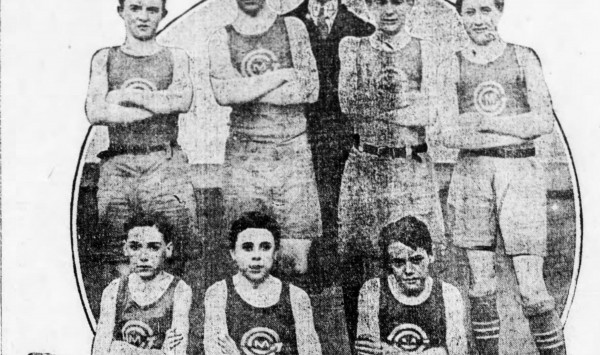
They only lasted about eight years, but the 115-pound class Lady of Good Counsel Minims were as good as any Catholic midget basketball team in Stuyvesant Heights on the court. Fed by the Catholic families of the eastern section of Stuyvesant Heights and parts of Bushwick, the Minim team played its collective heart out from 1911-1919. They inexplicably disappeared, though, just after the Great War. It is not clear where they went, but Our Lady of Good Counsel (915 Putnam Avenue) continued on as the Catholic Church to support Catholic Stuyvesant Heights up into the 21st Century. The church has now, though, gone to wherever the Minims went. Follow @BrownstoneDetec ———————————————————————————————————————– The Brownstone Detectives This story was composed from research performed by The Brownstone Detectives. Let us do an in-depth investigation of your house and its former owners and produce your very own House History Book. Your hardbound coffee table book will include an illustrated and colorful narrative timeline that will bring the history of your house to life. Contact us today.
PICS FROM THE WWI MEMORIAL CEREMONY
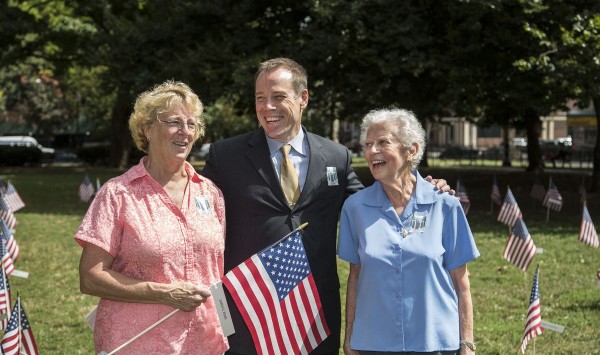
PHOTOGRAPHY BY MATTHEW KARAS. Many thanks to so many people who supported the memorial service in Saratoga Park last Wednesday (10 September). In addition to those from the NYC Parks Department and the political representatives who spoke – Borough President Eric Adams and Councilwoman Darlene Mealy – the military was represented by Lt. Col. Joseph Davidson who came out from Fort Hamilton, and the chief historian for the History Channel/A+E Networks (also currently President Obama’s Commissioner on the World War One Centennial Commission) was on-hand to speak about the importance of renovating our old WWI memorials and honoring those who fought for our country. The Brownstone Detectives performed the historical study, researching the soldiers, sailors, airmen, and Marines from the neighborhood who made the ultimate sacrifice almost 100 years ago during the Great War. And in the process, with just two weeks to do it in, The Brownstone Detectives further identified the descendants of many of the men on the honor rolls, three of whom attended the ceremony. And, Michael Lisnet, our great Macon Street neighbor, who helped us out by finding us a wonderful photographer, Matt Karas. Matt, whom we’d never even met or spoke to before, came out to take some wonderful pictures of the event for us. The pictures in this blog post all belong to him – and we thank him very much for his support. Enjoy these wonderful snapshots shared with us by Matthew Karas: Follow @BrownstoneDetec ———————————————————————————————————————– The Brownstone Detectives This story was composed […]
SARATOGA PARK WWI MEMORIAL IS TODAY
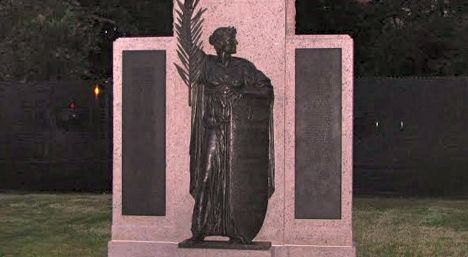
Today at noon, the World War I “Victory & Peace” Memorial in Brooklyn’s Saratoga Park will be unveiled and rededicated.All are welcome and invited to attend. Descendants of at least two of the men (who gave their lives in the Great War) will be in attendance, joined by Brooklyn Parks Commissioner Kevin Jeffrey, Borough President Eric Adams, Col. Joseph Davidson of the U.S. Army, and representatives of the George P. Davis Post No. 116 of the American Legion and Auxiliary. Here follows a list of the 105 men and one woman whose names appear on the honor rolls flanking the statue. They were all from the neighborhood. They all gave their lives in service to their country. George Albrecht William Banscher Edward J. Bell Harold Benson Harry S. Bowyer Edward C. Brennan Joseph A. Brunner Francis J. Buckley Arthur J. Burgh J. Edgar Burling Robert F. Carrie James C. Clark Jesus Clemente Joseph A. Collopy Hedley H. Cooper Frank E. Cortes Thomas Cross Leonard Dalton Frank E. Discher Frederick C. Dose John F. Dowd Elmer D. Edwards George H. Edwards Charles D. Elson Edgar H. Fessenden James E. Fitzpatrick John J. Fitzpatrick Frank A. Gaffney Anthony Galgano George E. Gilbert James T. Greene Evan F. Gustafson Walter C. Haeuser Frederick Haupt Thomas F. Herron Raymond D. Hill Frank E. Hillenbrand Charles S. Hilton Arthur V. Holdsworth Thomas B. Hurley James D. Irwin Gordon W. Johnson Arthur P. Jones James Keely Thomas A. Kehoe Arthur C. Kimber Alfred R. Kipling Louis […]
CPL. EDWARD C. BRENNAN (A BED-STUY HERO)
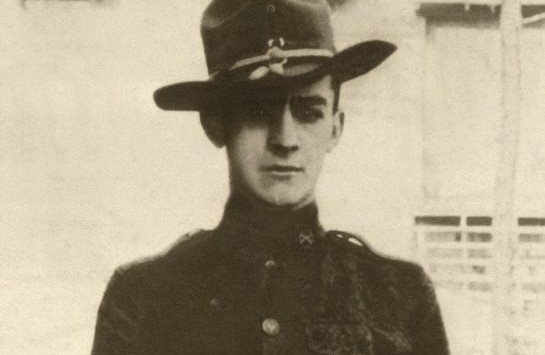
******************************************************************************************************************************** Brownstone Detectives investigates the history of our clients’ homes. The story you are about to read was composed from research conducted in the course of one of those investigations. Do you know the history of YOUR house? ******************************************************************************************************************************** In 2014, The Brownstone Detectives partnered with the New York City Parks Department to help celebrate the lives of the servicemembers of Bedford-Stuyvesant Heights who made the ultimate sacrifice during the Great War. We researched these heroes to locate pictures, stories, and their descendants to be brought together for a ceremony that dedicated a new “Victory and Peace” war memorial at Saratoga Park. This biography tells the story of one of those servicemembers. CPL. EDWARD CROMWELL BRENNAN Edward Cromwell Brennan was born to Sebastian and Elsie Brennan on 19 March 1896. Edward was the elder of two boys born to the couple. His father, Sebastian, worked as a “letter carrier,” and the family lived at the time of the war at No. 117 Saratoga Avenue. According to the draft registration card Edward completed and signed before the local draft board on 5 June 1917, he was 21 1/2 years old, a single man of medium height, slender, with brown hair and eyes. Before signing up to serve, Edward had worked as a clerk at the Liverpool London & Globe, an insurance company located at 80 William Street in New York City. On 28 September 1917, Edward was inducted into the U.S. Army as a private in the 307th Infantry Regiment, 77th […]
LT. SAMUEL J. REID (A BEDSTUY HERO)
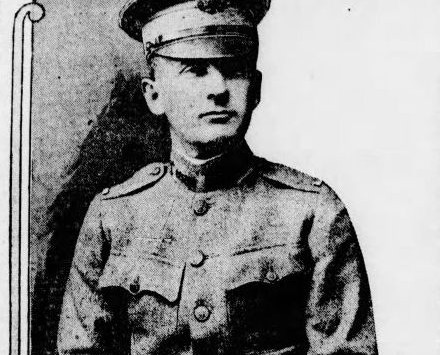
******************************************************************************************************************************** Brownstone Detectives investigates the history of our clients’ homes. The story you are about to read was composed from research conducted in the course of one of those investigations. Do you know the history of YOUR house? ******************************************************************************************************************************** In 2014, The Brownstone Detectives partnered with the New York City Parks Department to help celebrate the lives of the servicemembers of Bedford-Stuyvesant Heights who made the ultimate sacrifice during the Great War. We researched these heroes to locate pictures, stories, and their descendants to be brought together for a ceremony that dedicated a new “Victory and Peace” war memorial at Saratoga Park. This biography tells the story of one of those servicemembers. LT. SAMUEL JACKSON REID “Today I have lost the best pal I ever had.” So began the diary entry of Lt. Samuel Jackson Reid’s orderly for 22 August 1918. Such words might have been more understandable describing lifetimes friends or companions, but this touching and heartfelt line was written by a man who had known his commanding officer for a mere few months. But Reid was not only a beloved officer in his field artillery battery; he was also popular with the entire regiment, according to Reid’s first sergeant, who explained this to the Brooklyn Daily Eagle after Reid’s death. “Sam, by never having driven the men when it was unnecessary, by his consideration and personal regard for them and by his immediate demonstration of himself as a man of fighting spirit, a lover of justice and of […]